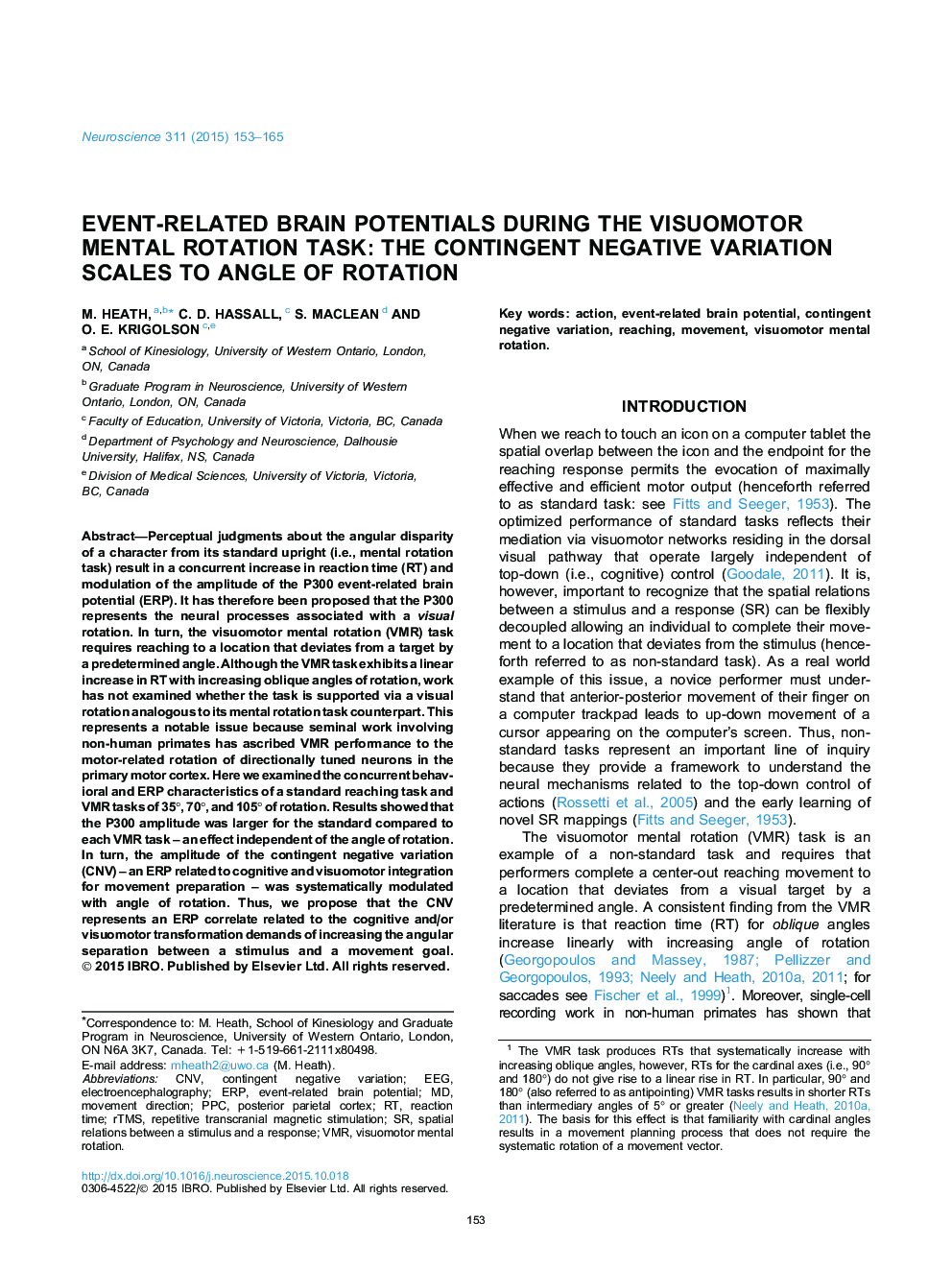| Article ID | Journal | Published Year | Pages | File Type |
|---|---|---|---|---|
| 6271650 | Neuroscience | 2015 | 13 Pages |
Abstract
Perceptual judgments about the angular disparity of a character from its standard upright (i.e., mental rotation task) result in a concurrent increase in reaction time (RT) and modulation of the amplitude of the P300 event-related brain potential (ERP). It has therefore been proposed that the P300 represents the neural processes associated with a visual rotation. In turn, the visuomotor mental rotation (VMR) task requires reaching to a location that deviates from a target by a predetermined angle. Although the VMR task exhibits a linear increase in RT with increasing oblique angles of rotation, work has not examined whether the task is supported via a visual rotation analogous to its mental rotation task counterpart. This represents a notable issue because seminal work involving non-human primates has ascribed VMR performance to the motor-related rotation of directionally tuned neurons in the primary motor cortex. Here we examined the concurrent behavioral and ERP characteristics of a standard reaching task and VMR tasks of 35°, 70°, and 105° of rotation. Results showed that the P300 amplitude was larger for the standard compared to each VMR task - an effect independent of the angle of rotation. In turn, the amplitude of the contingent negative variation (CNV) - an ERP related to cognitive and visuomotor integration for movement preparation - was systematically modulated with angle of rotation. Thus, we propose that the CNV represents an ERP correlate related to the cognitive and/or visuomotor transformation demands of increasing the angular separation between a stimulus and a movement goal.
Keywords
Related Topics
Life Sciences
Neuroscience
Neuroscience (General)
Authors
M. Heath, C.D. Hassall, S. MacLean, O.E. Krigolson,
